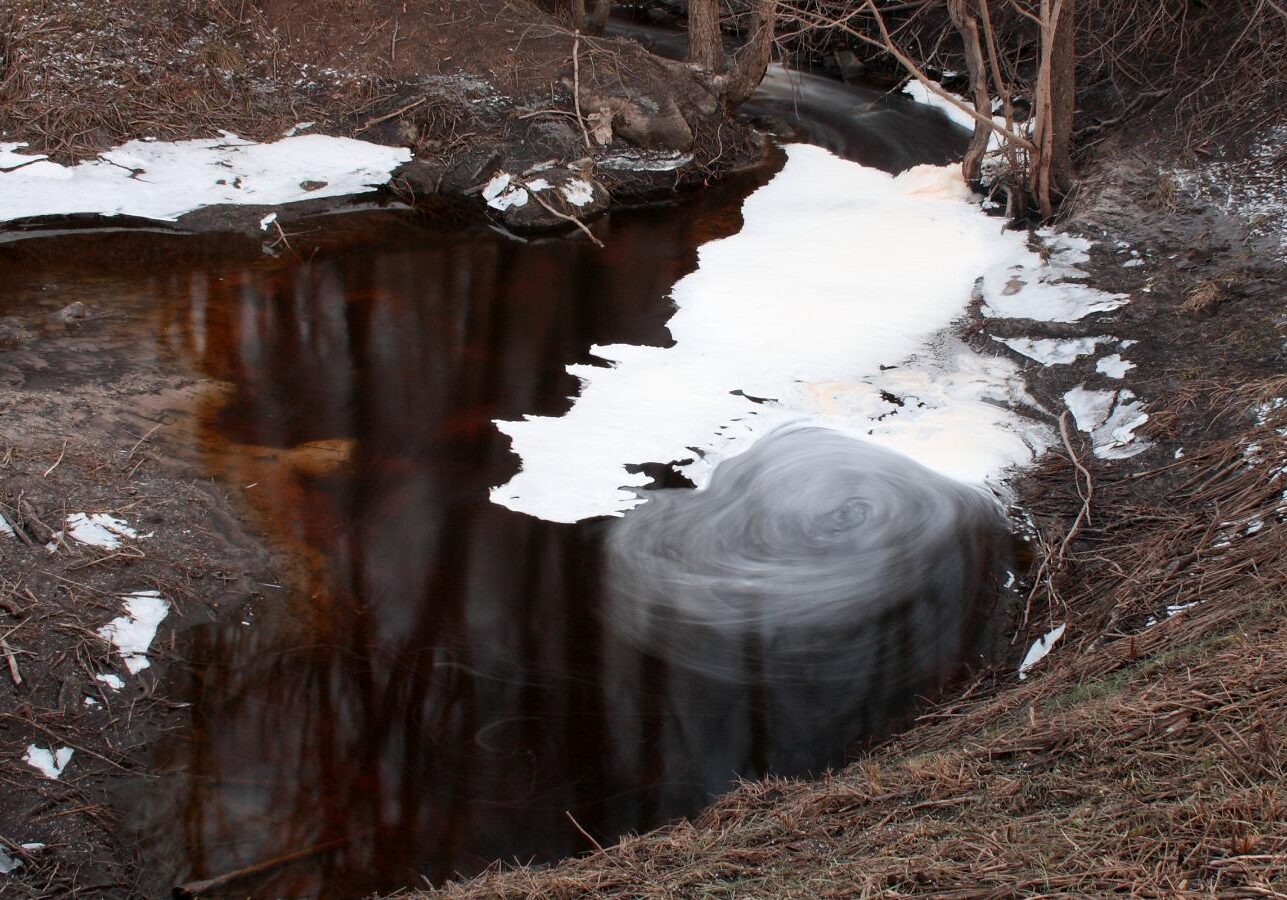The Kurisu sinkhole

Kurisu sinkhole is located near Kurisu village.
The upper part of the sinkhole has a diameter of about 32 metres, in the lower part it narrows down to 12 metres, and it is 6.2 metres deep. In here, the creek coming from Pihla wetland disappears under the ground.
In summer, when the weather is dry, you can see a limestone bedrock and a little opening to a cave at the bottom of the sinkhole. During high water in spring, so much surface water gathers here that the crater is filled with it and some of it spills over to the surroundings so that the whole place is reminiscent of a little lake.
The water that disappears into the sinkhole re-surfaces on the ground 3 km away on an old pasture in Pihla village.
Karst is a geological phenomenon in which rainwater dissolves easily crumbling bedrock and is absorbed through fissures, creating underground cavities, caves, and even underground rivers. In Estonia, karst phenomena occur mainly in the areas where limestone and dolomites form the bedrock. Karst is wide- spread in Estonia, mainly in Northern, Central and Western Estonia, including the islands. Large sinkholes are called ‘kurisu’ in Estonian. They can be funnel-, bowl-, or saucer-shaped and often reach dozens of metres in diameter.
In Hiiumaa, the karst phenomenon occurs in several places, but the most magnificent of them is the Kurisu sinkhole. During spring flooding, the whole funnel is full of water and resembles a small lake. The water flows away through a small karst cave at the bottom of the funnel and an underground river. Sometimes, when the absorption is rapid, a vortex can be seen in the middle of the funnel.
Several legends are known about the sinkhole. The most common one is the story of a girl who is said to have taken oxen exhausted by working to drink at the sinkhole. The vortex happened to be so powerful that it swallowed the oxen with the load and the girl. Only the girl’s red hair ribbon is said to have been found later in the pasture of Pihla farm, where the waters of the sinkhole come to the ground again. It is believed that such incidences were the reason why people started to call the sinkhole an “evil mouth” (‘kuri suu’ in Estonian). However, it is likely that the word ‘kurisu’ actually comes from such Balto-Finnic words as ‘kuristik’ (abyss) and ‘keeris’ (vortex).
Gallery
It is a waypoint on the journey
You might also be interested in:

